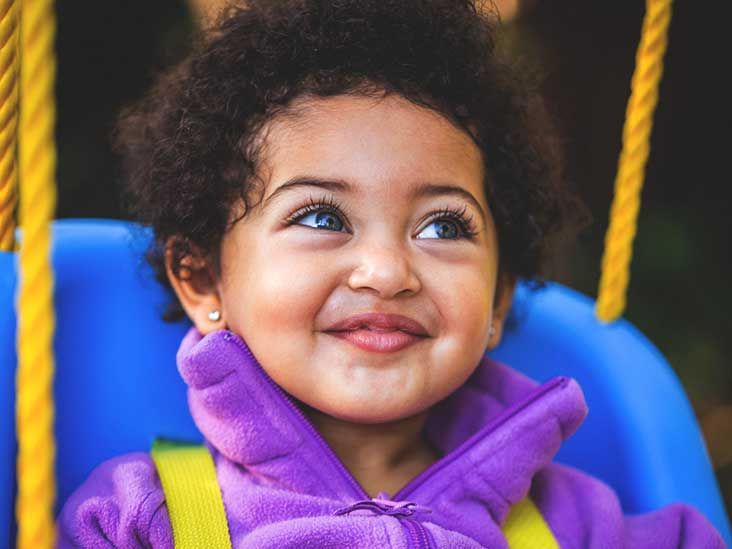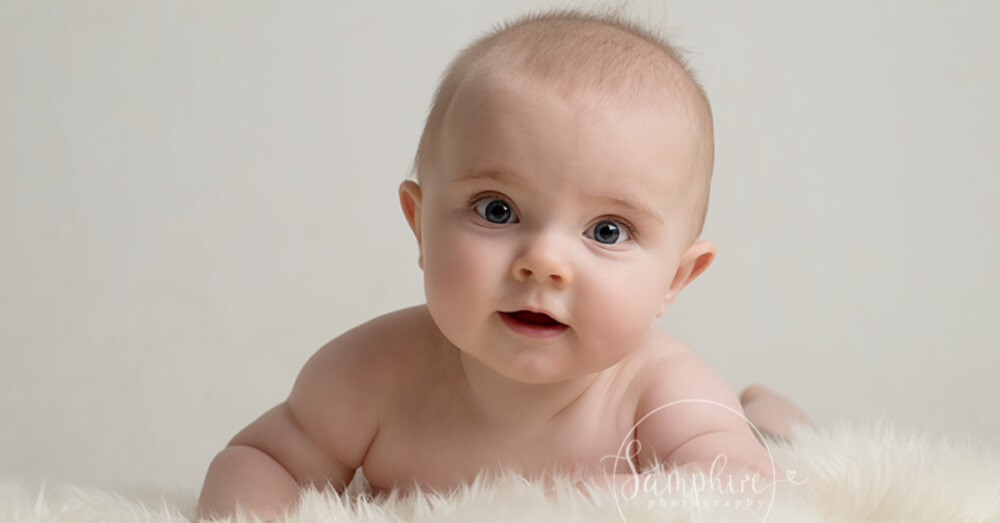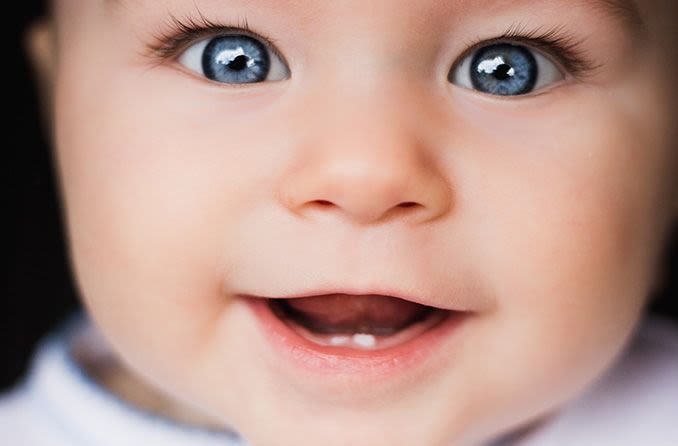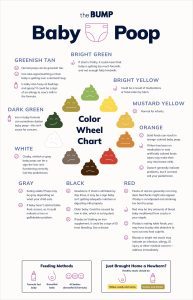No, not all babies have blue eyes. Genetics determine a baby’s eye color.
Eye color is a fascinating aspect of human genetics. While many people are born with blue eyes, not all babies have this characteristic. In fact, a baby’s eye color is determined by genetics. The color of a baby’s eyes is influenced by the genes inherited from their parents.
These genes can produce a wide range of eye colors, including blue, brown, green, or hazel. As a baby grows, their eye color may evolve and change over time, as pigment production in the iris continues to develop. Understanding the genetic factors that determine eye color can be a complex and intriguing topic in the study of human biology.

Genetics Of Eye Color, Babies have blue eyes
The genetics of eye color is a fascinating topic that sheds light on why some babies are born with blue eyes while others have different shades. Understanding the inheritance patterns of eye color can help demystify why certain traits are passed down from parents to their children.
Understanding Dominant And Recessive Genes
Eye color, like many other traits, is determined by a complex interplay of genetic factors. Genes come in pairs, and eye color is specifically influenced by a set of genes that determine the amount and pattern of melanin in the iris. Dominant genes, such as those for brown eyes, typically override recessive genes, which are responsible for lighter eye colors like blue or green. The combination of these genes from both parents leads to the variety of eye colors that exist in the human population.
Impact Of Parents’ Eye Colors
The eye color of a child is not solely dependent on the eye color of their parents. However, the chances of a child having a particular eye color can be influenced by the genetic makeup of both parents. If both parents have the genes for brown eyes, their child is more likely to inherit these dominant genes and have brown eyes as well. On the other hand, if one or both parents carry the recessive genes for blue eyes, this increases the likelihood of their child having blue eyes.
Development Of Eye Color In Babies
Babies’ eye color development is a fascinating process. While many newborns have blue eyes, not all do. The color can change over time due to genetics and melanin production. Understanding the factors that influence eye color can help parents anticipate the final shade their little one will have.
### Development of Eye Color in Babies Babies are born with a charming set of eyes that can captivate anyone who looks into them. It is interesting to know that eye color in babies is not always permanent. Many parents wonder if all babies have blue eyes initially, and if so, when and how their eye color changes. In this blog post, we will explore the development of eye color in babies and the factors that can influence their final eye color.
Timeline Of Eye Color Changes
Eye color in babies can change significantly during their first few months of life. Here’s a general timeline of how their eye color may develop: – At birth: Most newborn babies have eyes that appear blue or grayish. This is mainly because the production of melanin, the pigment responsible for eye color, is limited at birth. – Within the first six months: By the time babies reach the age of six months, their eye color may begin to undergo noticeable changes. The eyes may become darker or develop shades of green, brown, or hazel. – Up to one year: The final eye color typically becomes more pronounced and stable within the first year of a baby’s life. However, it’s essential to remember that eye color changes can still occur in some cases, even beyond this period.
Factors Influencing Final Eye Color
Several factors play a role in determining a baby’s final eye color. These factors can influence the amount of melanin produced in the iris. Some of the influencing factors include:
- Genetics: The most significant influence on eye color is genetics. The color of a baby’s eyes is inherited from their parents, with different combinations of genes leading to a variety of possibilities.
- Melanin production: The amount of melanin present in the iris can determine how light or dark the eyes appear. Higher levels of melanin result in darker eye colors such as brown, while lower levels can lead to lighter shades like blue or green.
- Stimulation: External factors, including light exposure and surroundings, can stimulate the production of melanin in the iris, potentially influencing the final eye color.
Understanding the fascinating process of eye color development in babies and the factors that contribute to their unique eye shades helps parents appreciate the beauty and individuality of their little ones. Keep in mind that every baby is different, and while some may have their eye color set early on, others may experience changes for a longer period. So, embrace the wonder of this natural transformation and cherish those mesmerizing eyes that make your baby truly extraordinary.
Dispelling The Myth, Scientific Evidence On Baby Eye Colors
According to scientific research, the common belief that all babies are born with blue eyes is a widely perpetuated myth. The color of a baby’s eyes is determined by genetics and melanin production. At birth, a baby’s eye color may appear blue due to the lack of melanin, but as they grow, the true color will gradually emerge.
Variability In Newborn Eye Colors
It’s important to understand that there is a wide range of possible eye colors for newborn babies. Genetic factors play a significant role in determining the color of a baby’s eyes, and it’s not uncommon for babies to inherit eye colors different from their parents. This variability is a result of complex genetic combinations and the interplay of dominant and recessive genes.
Common Eye Colors In Babies, Shades Of Blue
One of the most enchanting aspects of newborn babies is their eye color. When it comes to eye colors, blue is often the first to capture our attention. It’s a common belief that all babies are born with blue eyes, but is this really true? Let’s explore the different shades of blue eyes that babies can have.
Blue eyes in babies can vary in intensity, ranging from a pale, almost grayish hue to a deeper, vibrant shade. These shades are determined by the amount of melanin pigment in the iris of the eye. The less melanin present, the lighter the shade of blue.
Babies with lighter shades of blue eyes often have a magical, ethereal appearance, like they hold a universe of possibilities within their gaze. On the other hand, babies with darker shades of blue eyes exude a sense of depth and intensity.
Other Common Colors
While blue eyes are undoubtedly captivating, they are not the only eye color that babies can possess. As babies grow, their eye color may undergo changes, and different colors may emerge. Let’s explore the other common eye colors that babies can have.
One commonly observed eye color in babies is brown. Brown eyes often evoke warmth and familiarity and are the most frequently seen eye color worldwide. Babies with brown eyes have a sense of vibrant energy that can light up a room.
Another eye color that babies can have is hazel. Hazel eyes are a combination of different colors, typically featuring green, brown, and gold tones. These eyes can appear to change colors based on lighting conditions, adding an enchanting mystique to a baby’s expression.
Finally, green eyes are a rare but beautiful eye color that some babies possess. Green eyes often exude a sense of wonder and tenderness. Babies with green eyes can capture your attention with a single gaze, as if they hold the secrets of nature within their irises.
Cultural And Historical Perceptions Of Baby Eye Color
Babies’ eye colors have long been a topic of fascination and cultural significance around the world. Different cultures and historical periods have attributed various meanings and beliefs to the color of a baby’s eyes.
Impact On Baby’s Identity
Eye color has been linked to a baby’s identity in many cultures, with some believing that certain eye colors are indicative of specific traits or destinies.
Superstitions And Beliefs
Superstitions surrounding baby eye color have been prevalent throughout history, with beliefs ranging from magical powers associated with certain colors to omens of good or bad luck.
:max_bytes(150000):strip_icc()/Parents-Stocksy-1271374-eebb60b5d4f44c69902db219c73733c6.jpg)
Practical Implications For Parents
As parents, you may wonder about the eye color of your newborn and the practical aspects it entails. Understanding the possibilities and care requirements can help you navigate this aspect of your baby’s development smoothly.
Choosing Baby Eye Color
Genetics play a major role in determining a baby’s eye color, and it is not possible to choose or change it. Enjoy the unique color your baby has and embrace their individuality.
Eye Care For Different Colors
Each eye color may have specific care needs. Ensure proper eye hygiene according to your baby’s eye color to maintain optimal eye health.

Do All Babies Have Blue Eyes At Birth?
Yes, most Caucasian babies are born with blue eyes, but their true eye color may change over time. Melanin production in the iris determines eye color.
How Do You Tell If A Baby’s Eyes Will Stay Blue?
Genetics primarily determine if a baby’s eyes will stay blue. If both parents have blue eyes, it’s likely.
Is Every Human Baby Born With Blue Eyes?
No, not every human baby is born with blue eyes. Eye color can change as they grow.
Which Parent Determines Eye Color?
Eye color is determined by a combination of both parents’ genes. This means that the eye color of the child will depend on the genes inherited from the mother and the father.
Conclusion
The color of a baby’s eyes is determined by genetics and can change during the first year. Although many babies are born with blue eyes, it’s not a guarantee that they will stay that color. Understanding the science behind eye color can help dispel the common myths.
Embracing the uniqueness of every child’s eye color is part of the beauty of diversity in the world.





